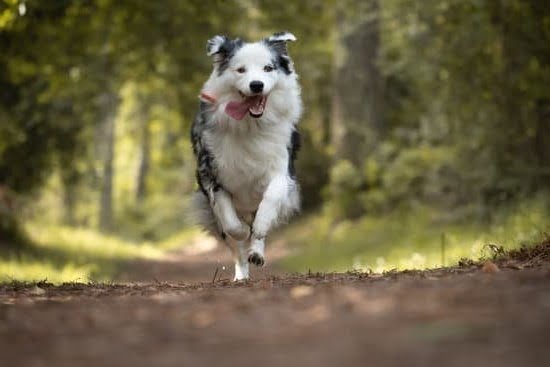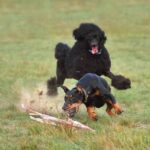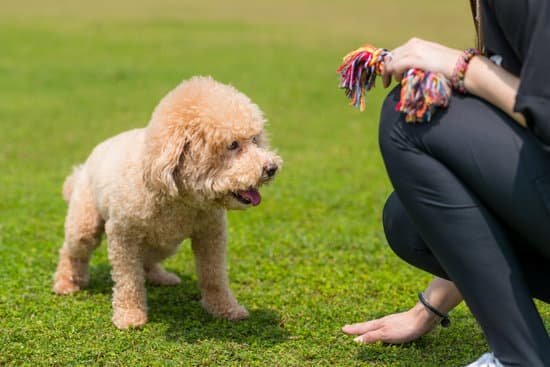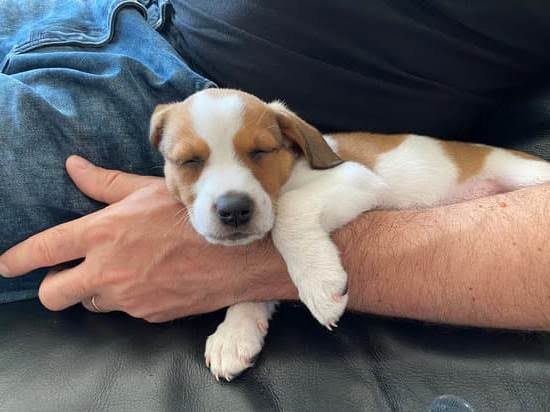Introduction
The training of a young dog to not bite is one of the most important aspects that a pet parent must consider. Teaching a pup good behavior from the outset can be incredibly beneficial for safety, and for the relationship between the pet and its owner. Establishing clear boundaries on what is and isn’t acceptable can help avoid bites and teach pups to understand basic commands. Not only does this provide for more enjoyable interactions with people and other animals, but it also contributes to building trust between the dog and its family. It’s important to note too that certain breeds have higher risk factors when it comes to biting, thus, understanding how best to train these dogs is all the more critical.
After acknowledging why training young dogs not to bite is so essential, there are several tips and techniques that pet parents should follow in order to ensure success. First, it’s recommended that each pup receive an introductory lesson in bite inhibition training with their owners as early as possible, using treats or toys as rewards for positive behaviors. Furthermore, consistency is key in establishing clear expectations for when-and more importantly-when not-to bite; if biting behavior continues in certain situations despite repeated reprimands from the owner, distractions should be used such as toys or clapping hands while firmly saying “no” in order to redirect unwanted behavior. Additionally, things like daily exercise (e.g., walks), games, grooming sessions (brushing teeth), trainings classes/obedience courses should all be incorporated into a puppy’s regimen alongside regular socialization opportunities with other puppies and animals–these activities help keep any playful chewing or biting under control while promoting better habits through positive reinforcement methods such as praise or treats. Finally, crate training can also be utilized as a method of teaching young dogs not to bite; an enclosed area where pups can retreat after chew sessions will serve both their physical & metaphorical “timeouts” within controlled environments before reintroducing them into spaces where biting is inappropriate again later on down the line.
Analyzing Puppy Biting
Before you can begin to train your young dog not to bite, it is important to understand why puppies bite in the first place. Puppies in general are very curious and enjoy exploring their environment. To do so they use their mouths (as well as all of their other senses). This makes sense physiologically because going through life with a mouth full of teeth is a very effective way of learning about objects and people that the puppy encounters. It helps them better identify the shape, size, texture and content of the various objects in their environment.
Additionally, puppies need to learn how to appropriately interact with people and other animals both socialy and behaviorally. In order for them to do this adequately, they use their mouths as a tool just like older dogs do when playing with another canine companion: they nip and bite at each others’ bodies during playtime as part of their playful interaction. Therefore, it is important to recognize that biting in puppies is natural and should not be seen as necessarily bad or aggressive behavior; rather, see it as an opportunity for teaching your pup appropriate behaviors for interacting with humans and other animals!
Establishing a Training Structure
Establishing a training structure is an necessary step when attempting to train a young dog not to bite. Setting up clear expectations and boundaries while offering positive reinforcement will naturally encourage good behavior in your pup. To do this, have a few basic commands that you want your pup to know and use those frequently throughout their training. Whenever your pup follows or complies with one of these commands, be sure to reward them with a treat or plenty of verbal praise. Having this positive reinforcement system will help them understand when they’re doing something right and will help build trust between you and your pet.
You should also establish clear boundaries and expectations for what kind of behavior is acceptable or unacceptable in the house. Be consistent with these rules and make sure that you are the leader so the pup understands who’s in charge. Discipline should never involve any physical punishment; instead stay calm and patient, but firm, whenever disciplining them. Finally, always provide plenty of love and attention so that the pup knows it is loved no matter what!
Redirecting Essentials
When training a young dog not to bite, it is important to provide them with alternate activities that are both appropriate and enjoyable. Supplying the dog with a variety of safe chew toys, balls and other items designed specifically for this purpose can be a great way to redirect their focus away from biting people or things. Additionally, adding interactive elements like hidden treats or scatterfeeders can help keep their attention away from unwanted objects or behaviors. Be sure to have different toys and textures available at all times so your pup doesn’t get bored! When possible, rotate new items regularly for the best results. With careful guidance, these activities can give your pup an exciting distraction in place of destructive chewing behavior.
Dealing with Occasional Biting
When a young dog begins to nip, the first step is to try and identify what behavior might be leading up to it. Is the dog feeling anxious or afraid? Is he responding to attention, perhaps seeking play? Perhaps there is something in his environment that has spooked him. By understanding the underlying cause of the biting, owners can better address the problem.
Once the root cause of the behavior has been identified, owners should take steps to prevent their pup from biting. Reassure them with positive reinforcement every time they don’t choose to bite and discourage nipping through gentle reprimands that direct them away from biting behaviors. Encouraging desirable behaviors and working towards training goals will help redirect their energy and help them find better ways to express themselves in potentially difficult situations.
If a puppy bites too hard when playing with people or other animals, using a toy in those situations can help set boundaries and reduce the risk of injury. Owners can also teach alternate behaviors like ‘drop it’ or ‘give’ if they want their pup to let go of an item they are holding onto as well as use safety tools such as muzzles or body harnesses for extra caution during outings or playtime with others. Finally, getting professional advice such as lessons with a trainer or consulting with a vet for guidance on canine behavior can be tremendously helpful for difficult cases. Early intervention is key in reducing potential hazards associated with aggressive behavior and training is essential for teaching puppies how to interact safely with people and animals.
Avoid Counterproductive Habits
When training young dogs not to bite, it is important to avoid counterproductive habits such as physical corrections like scolding, hitting or jerking on a leash. Physical corrections can lead to fear and confusion in dogs, which can worsen the situation and potentially make them more likely to use their teeth on people. Instead of punishing misbehaviour, owners should focus on reward-based training techniques, such as positive reinforcement and redirection techniques. Positive reinforcement uses treats, toys or praise to reward the dog for good behaviour; this makes them more likely to repeat these behaviours in the future by associating them with something pleasant. Redirection techniques involve distracting the dog when they start an unwanted behaviour, such as biting. One example is teaching the ‘leave it’ command, which encourages the dog to turn away from whatever they are focusing on and do something else instead, like come over for a pat. It is also important to provide alternate activities that will fulfill all your pup’s needs in a safe way – offering safe chew toys or teaching your young dog basic commands such as ‘sit’ – that it can focus its energy and attention on with enthusiasm. Training should be consistent and positive reinforcement should take place after each successful new task rather than punishing bad behaviour. Proper socialization and frequent playtime are also essential elements of successfully training young dogs not to bite.
Continuing Puppy Training
Whether your puppy is still a pup or older, it’s important to encourage good behavior with training. It’s also necessary to make sure you are consistent with the training and do not allow any slack or misbehavior. One way of teaching young dogs not to bite is through positive reinforcement. When they show successful behavior, like not biting when they’re playing, they should be rewarded with treats and praise which will help them learn that not biting yields positive results. You can also give them chew toys when they are teething or have extra energy so that they have an appropriate outlet for their teeth and jaws without being destructive.
To make sure that each level of training goes smoothly, it’s best to start small and gradually increase the intensity. Begin by creating simple commands as early as possible such as “sit”, “come”, and “no biting” in order to establish a strong foundation upon which more complex cues can be incorporated in the future. Break up each session into smaller segments with plenty of breaks so that it doesn’t become too overwhelming for them and make sure to always give rewards frequently throughout learning sessions so young dogs have positive reinforcement every time they get something right. Additionally, one-on-one guidance can help puppies understand when their behaviour is unacceptable which encourages confidence in their ability to learn correctly. Lastly, don’t forget to take some time out of everyday for playtime–this gives puppies the opportunity to practice proper etiquette skills such as not biting during playtime when under supervision from their owners.
Concluding the Process
Now that your young pup has become well-acquainted with the dos and don’ts of not biting, it is important to anticipate any future situations that may arise. To do this, it is best to link to resources such as online forums and people who have experienced similar scenarios and can provide feedback about how it was handled. This way, you will be better prepared for whatever situation arises in which your pup may attempt to bite someone or something. Additionally, if possible, try sending your pup to a professional trainer where they can learn more and get some personal practice.
Ultimately, what will matter most is consistency within the training process. You must stick to the system you enforced when first teaching your dog since repetition breeds results. If you are consistent with implementing the steps needed towards having a safe and well-trained pup, then it won’t be long before you have an obedient canine companion who knows how to not bite when needs be – and will always follow your commands!

Welcome to the blog! I am a professional dog trainer and have been working with dogs for many years. In this blog, I will be discussing various topics related to dog training, including tips, tricks, and advice. I hope you find this information helpful and informative. Thanks for reading!





